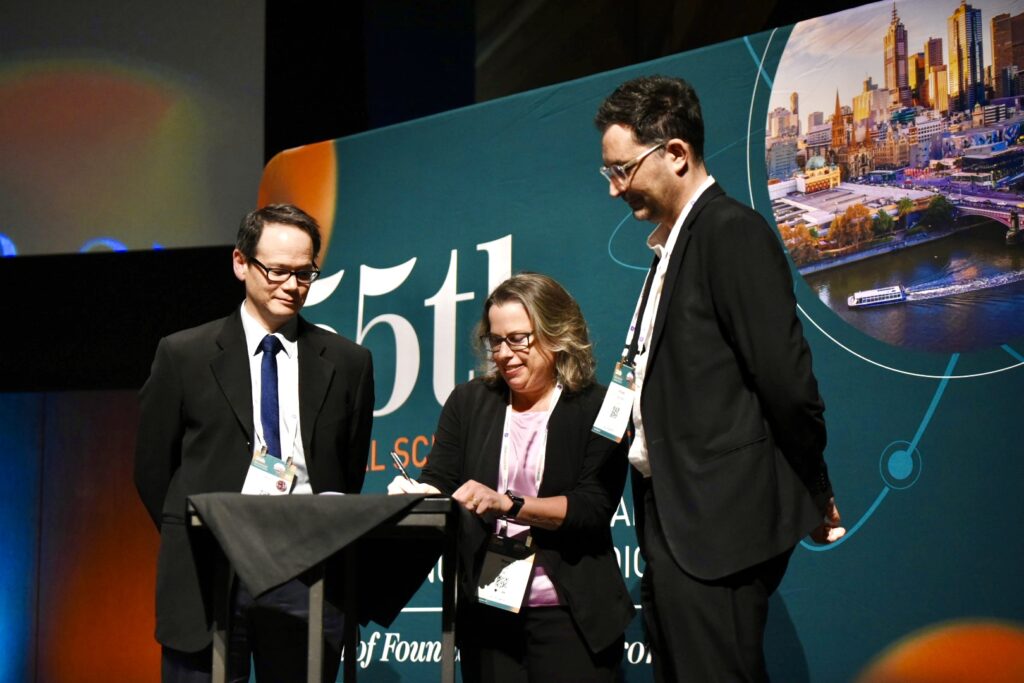A new national-scale molecular-imaging network that aims to improve cancer imaging, dementia diagnosis and treatment, and new radiopharmaceuticals was launched Saturday at the annual meeting for the Australian and New Zealand Society of Nuclear Medicine.
The Human Molecular Imaging Translational Network is founded by Australia’s National Imaging Facility (NIF). The network will bring together 10 imaging research facilities to operate as a ‘single front-door’ for molecular imaging research, and create new partnerships.
The network’s ‘single front-door’ will enable harmonisation of techniques and imaging equipment across all sites, leading to improved data quality, better access for patients to clinical trials, access to data and the ability to run comparative studies across a number of sites.
This $10-million-dollar, 3-year initiative was made possible through strong co-investment by the Australian Government’s National Collaborative Research Infrastructure Strategy ($5.3 million) and $4.4 million in co-funding from the network’s 10 partners:
- La Trobe University and the Olivia Newton-John Cancer Research Institute
- The University of Queensland
- The University of Melbourne
- The University of Sydney
- The University of NSW
- Macquarie University
- ANSTO, Australia’s Nuclear Science and Technology Organisation
- Monash University
- SAHMRI, the South Australian Health and Medical Research Institute
- The University of Western Australia.
NIF CEO Dr Wojtek Goscinski said the new network – comprised of 15 staff across Australia working together to support this important area of innovation – will also reduce the current barriers of translating the latest discoveries into clinics for everyday Australians.
“The network means Australia’s researchers are much better placed to improve and test new imaging techniques and therapeutic drugs that can lead to clinical trials in critical areas such as cancer and dementia,” he said.
“Nuclear medicine, more than ever before, gives us options for patients – whether that is diagnostic information or treatment with new therapeutic nuclear medicines”, says Professor Andrew Scott AM, who heads the lead partner (and the NIF Node), La Trobe University – Olivia Newton-John Cancer Research Institute.
“The collaborations this network will enable benefit Australia as national and international researchers and industries leverage our national-scale expertise, infrastructure and trials. These diverse uses make the most of NIF’s capacity and capability, and deliver on national priorities and policies.”

New MOU highlights shared aims of the network and ARTnet
The network also welcomes a new, strong partnership with ARTnet, the Australasian Radiopharmaceutical Trials network, a joint initiative between the Australasian Association of Nuclear Medicine Specialists (AANMS) and the Australian and New Zealand Society of Nuclear Medicine (ANZSNM).
As NIF and ARTnet sign a Memorandum of Understanding for this partnership, ARTnet Executive Chair Dr Kevin London said that “the MOU marks an exciting step in advancing molecular imaging research in Australia.”
Professor Roslyn Francis, chair of ARTnet’s Scientific Committee and director of the NIF Node at Herston Imaging Research Facility, co-signed the MOU and acknowledges the efforts of the committee and NIF to bring the network to fruition.
“We are eager to bring ARTnet’s goals and capacity together with the aims of the HMI Translational Network – ultimately benefiting patients in the areas of cancer, neurology and beyond,” said Prof Francis.
“The new partnership promises to accelerate our aligned goals of ensuring high-quality capabilities in Australasia, harmonising imaging protocols for research, expanding our ability to undertake multicentre clinical trials, and taking that through to impact with radiopharmaceuticals.”

Network accelerates work on Australia’s biggest health priorities
The network has an important role in Australia’s national health priority areas by:
- supporting the fast-growing area of nuclear medicine and theranostics (personalised approach that combines diagnostic imaging with targeted therapy using radioactive drugs) for treating cancer with new radiopharmaceuticals, increasing access to more trials, and allowing for more efficient manufacturing
- helping Australian researchers test new dementia treatments through better scanning techniques, and improving the scale used to measure Alzheimer’s disease progression – particularly by partnering with the Australian Dementia Network (ADNeT)
- harmonising PET scanning procedures across Australia at participating sites so more (and more complex) trials can be done for Australian patients.
The network will ensure Australia’s molecular imaging research infrastructure is as productive as possible with a focus on translating foundational research into better patient outcomes. It will also keep our research internationally competitive and improve Australia’s research capacity by increasing researchers’ access to critical equipment, expertise and clinical trial groups.
Through the network, researchers will have increased opportunities to engage with expert clinicians for translational development, patient advocacy groups, and through ARTnet with clinical trial groups.